Could DAMA’s ‘Dark Matter Signal’ Simply Be Poorly Analyzed Noise?

Only one dark matter detection experiment ever gave a positive result, in conflict with all the others. This could be why.
For multiple generations now, it’s been apparent to astronomers that there’s more matter holding the Universe together than the normal stuff — protons, neutrons, and electrons — can account for. Observations ranging from the internal motions of individual galaxies to the large-scale structure of the Universe all require some unseen, massive component of the Universe to explain that far exceeds what normal matter could account for. From a whole suite of astrophysical observations, dark matter must exist.
And yet, despite every way humanity has ever come up with to try and detect whatever particle might be responsible for dark matter, direct detection experiments have all come up empty. As of early 2020, the constraints on what dark matter cannot be are incredibly restrictive. And yet, one controversial experiment — DAMA — continues to claim a signal consistent with dark matter. After over a decade of controversy, the mystery might finally be solved.
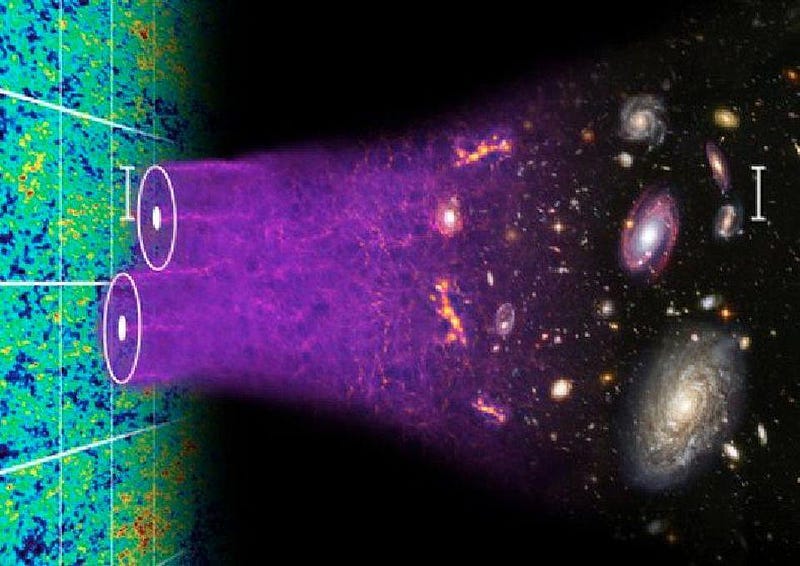
According to our best observations of the Universe, dark matter is absolutely required to explain all that we see. Without it, data from the cosmic microwave background would be impossible to explain, as would the large-scale clustering properties, the combination of gravitational effects with colliding galaxy clusters, or the abundances of the light elements in combination with everything else we observe. From an indirect, astrophysical perspective, there’s no known way to reproduce our Universe without it.
When you simulate a dark matter-rich Universe, however, you find that practically every galaxy must have a large, diffuse halo of dark matter surrounding it, and that the dark matter should be cold in temperature, meaning that the particles have been moving slowly compared to the speed of light for a long time. As the Earth moves both around the Sun and throughout the galaxy, it should plow through this dark matter, yielding a chance of interactions in most models.

A wide variety of experiments have been constructed to search for these particles, with different experiments focusing on different particle contenders. Microwave cavity searches have constrained axions; astrophysical observations have constrained black holes; X-ray and gamma-ray emissions have constrained self-annihilating scenarios. But the most popular dark matter candidate — the Weakly Interacting Massive Particle (WIMP) — has the tightest constraints of all.
Despite an enormous variety of experiments reporting a null result at very high precisions, one experiment has a 25-year history of claiming to see something: DAMA. Every year, they see a higher background at the same time of year and a lower background offset by six months: exactly the type of signal you’d expect if a dark matter “wind” were plowing into your apparatus with different speeds throughout the year.
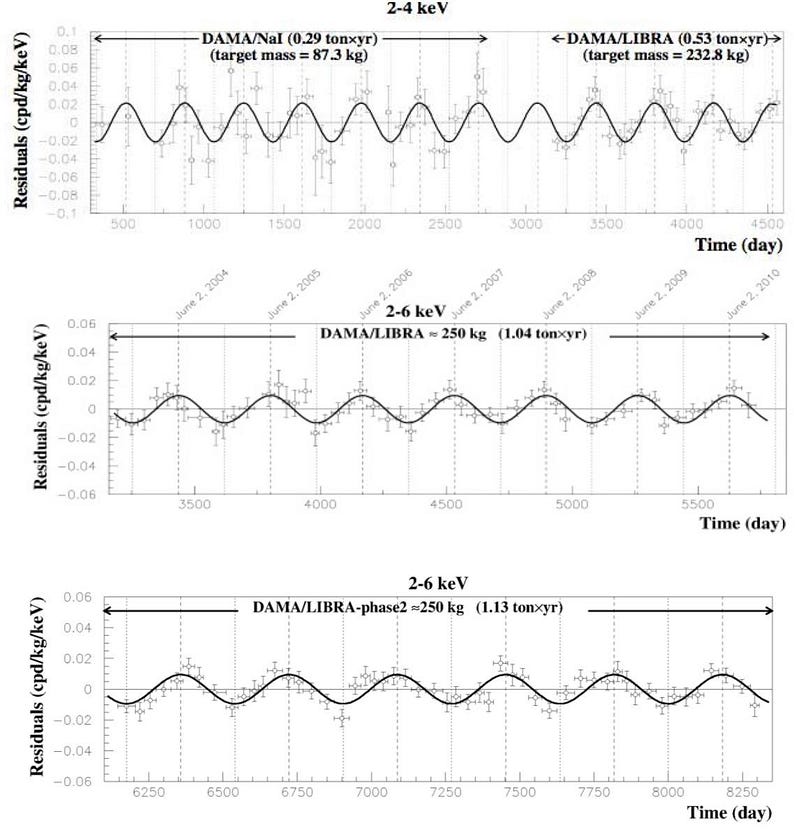
The signal isn’t synced up with Earth’s orbit around the Sun, nor is it aligned with our axial tilt. Instead, the signal always peaks in early June, when the orbiting Earth most closely lines up with the Solar System’s motion through the galaxy, and reaches its minimum in December.
However, there have always been some enormous problems with DAMA. For one, they don’t know what causes their signal in their detector. Some of it must be background noise, and yet it has never been quantified. If you don’t understand your noise, you cannot reliably extract a meaningful signal.
Another issue is that they have never made their raw data or analysis pipeline public, meaning that no one not in the DAMA collaboration can check their work. We can only see their finalized plots.
And finally, independent groups that have tried to reproduce it, including the COSINE-100 experiment and the ANAIS-112 experiment just last year, could not.
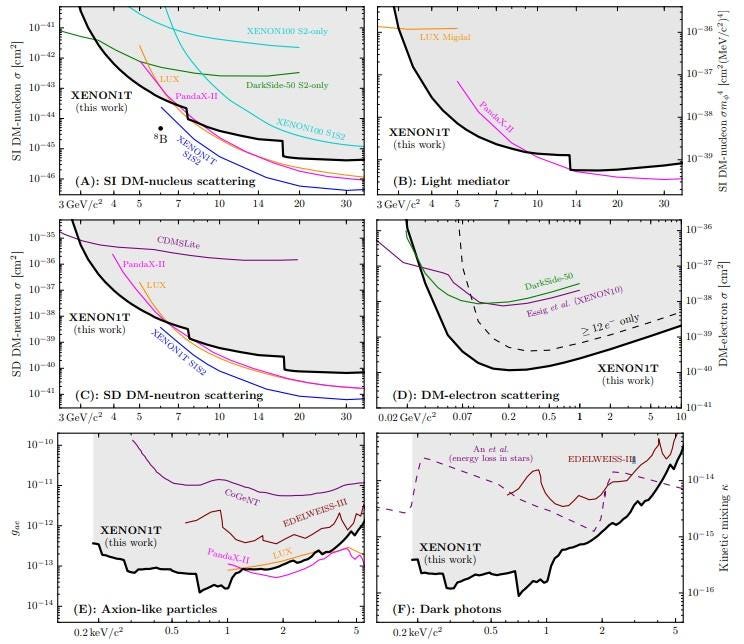
A number of exotic ideas have been proposed to reconcile what DAMA has observed with what everyone else is observing. These include:
- non-standard WIMPs that interact preferentially with protons rather than neutrons,
- a combination of muons and solar neutrinos affecting the DAMA apparatus,
- a contamination signal from radioactive argon,
along with other possibilities. Without transparency from DAMA, however, there’s no surefire way to understand what’s going on. However, a new paper just uploaded to the arXiv — where physicists often publish their papers before they appear in peer-reviewed journals — has put forth a compelling but simple explanation for DAMA’s results: the way they analyze their data could be creating a false signal.

When you think about noise in an experiment of any type, you likely think about random noise that fluctuates about some average value, but remains constant over time. If you had a signal on top of that random noise, one that varied periodically on the timescale of a year, you would see that same variation over and over again with every single year that passed. That is, that’s what you’d see if your signal was large enough to stand out from the noise with each cycle.
But if your signal was small compared to your noise, you might not be able to extract a meaningful detection with just one year of data, so you’d need to combine multiple years in order to see anything.
This is what DAMA says they do: they take multiple years of data, remove the average noise from each, combine the years together, and then extract the periodic signal. In and of itself, this isn’t necessarily a problem.
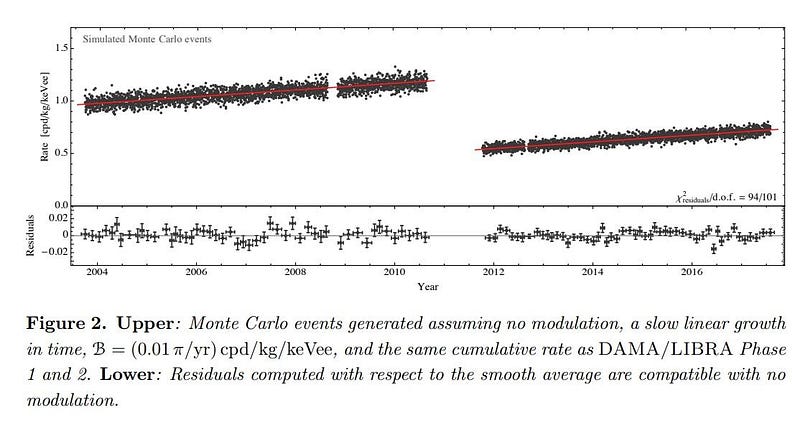
But what if your noise isn’t random and constant? What if it slowly changes over time, including a change that’s as simple as noise that either increases or decreases steadily?
In this case, that same procedure will create a periodic signal from your pure noise alone.
Think about why: for each year, you’re subtracting the average noise value. If the noise is increasing (or decreasing) with time, you’ll get a below-average (or above-average) value at the start of each of your years, while getting an above-average (or below average) value at the end of each of your years. You’ll still get a periodic signal, although it will look like a sawtooth wave, rather than an oscillating (sine) wave.
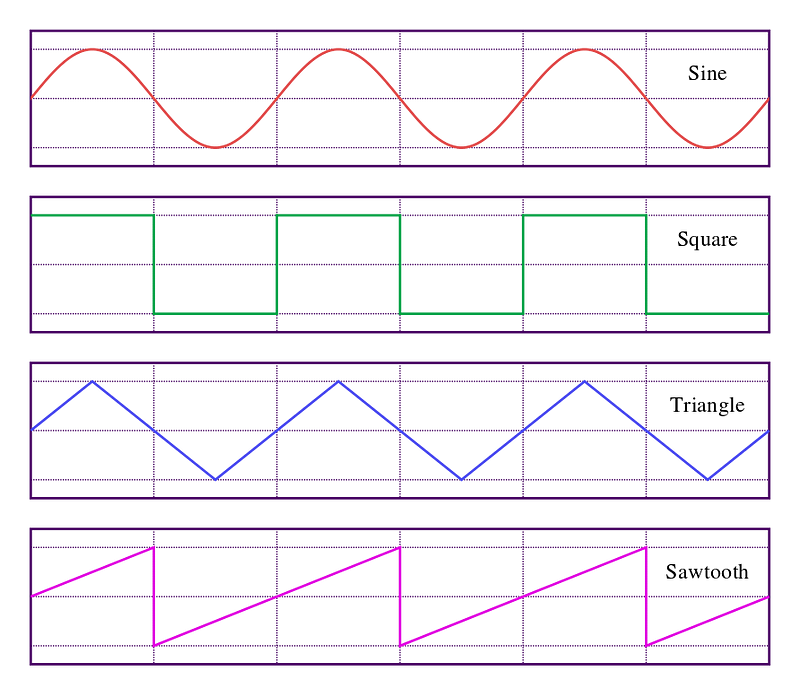
The DAMA collaboration in all of its iterations, including:
- DAMA/NaI,
- DAMA/LIBRA Phase I, and
- DAMA/LIBRA Phase 2,
have all subtracted their yearly weighted averages, according to the DAMA collaboration itself. In fact, if the collaboration were seeing a peak/trough in June/December in their signal, you’d anticipate that DAMA would start their annual cycles with a three-month offset from that value: either in early March or early September. According to the new paper, “The DAMA cycles start every year roughly around the beginning of September,” which means a background that slowly grows over time would give you a modulated amplitude that peaks in early June of every year.

What the new paper finds is that there really is evidence that something other than constant noise is occurring in the DAMA data, but that could just as easily be due to a constantly increasing (or decreasing) amount of noise inherent to the experiment itself, not due to any dark matter signal. The key test is to attempt to fit a sawtooth wave as opposed to a sine wave to the data, and the tests they perform show that the two fits are practically identical, within the statistical uncertainties.
This should be enough to cast substantial doubt on the validity of DAMA’s published data. According to co-author Nicola Rossi, “To the best of our knowledge, DAMA never made public the time dependence of the total rate of the single-hit scintillation events. Until this is done, we cannot exclude the most extreme case: that the rate is slowly increasing and that the whole DAMA signal could be a product of the possibly biased procedure.”
Furthermore, the COSINE and ANAIS experiments, both comparable to DAMA but showing no modulation signals (and with their data and analysis pipeline fully transparent), do exhibit significant time-dependences in their respective noises.

To date, DAMA has shown that a non-constant signal exists with 13-sigma significance. (5-sigma is normally the gold standard for experimental physics.) If they made their overall event rate publicly available, it would be easy to check — even just by eye — whether the modulation is real or whether there’s a noise floor that’s changing over time. Until they release their data, we cannot have any confidence that they haven’t fallen through this loophole.
As Nicola Rossi pointed out, “if the background is either increasing or decreasing an artificial modulation is introduced in the residual rate and it interferes with a possible real modulation.” Whether DAMA’s signal is real, and how strong it is if it is real, cannot be established without independently checking this very basic piece of raw data. If the data shows an annual growth in their noise of even just a few percent, their signal will vanish entirely.
Ethan Siegel is the author of Beyond the Galaxy and Treknology. You can pre-order his third book, currently in development: the Encyclopaedia Cosmologica.





